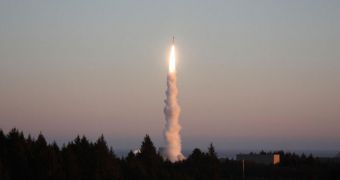Space is undoubtedly the last frontier, and as such it will most likely make up the target for numerous enterprises, private companies and state agencies. Aware of this, officials at the Kodiak Launch Complex, on Alaska's Kodiak Island, are doing everything they take to draw in new customers.
This spaceport is a modern, state-of-the-art facility, that is capable of supporting various types of delivery systems and space vehicles at its pad. Satellites can also be successfully launched from this location.
The Kodiak Launch Complex (KLC) first began conducting operations some eight years ago, when the first satellite was launched from these facilities.
[ADMARK=1The last rocket launch here took place on November 19, when the United States Air Force Minotaur 4 rocket took off to space, carrying three large satellites and four nanosatellites. The entire mission had a $170 million price tag.
According to the current flight manifest, the next rocket launch will take place in May 2010, and will involved another Minotaur 4 delivery system. The stages of these boosters are made up of modified engines taken from intercontinental ballistic missiles (ICBM).
But, for all its high-tech looks and capabilities, the KLC could enter a long period of inactivity after the launched of the next Minotaur 4. Former space shuttle engineer and operations manager Dale Nash is in charge of ensuring that doesn't happen.
He works for the state-owned Alaska Aerospace Corporation, whose main task is to draw companies seeking to place payloads into orbit in one of the wildest and least populated ares in the country.
NASH, as chief executive officer (CEO), is in charge of meeting up with small companies, satellite operators and other actors in the private space industry, and of persuading them to use the KLC.
“From an orbital mechanics point of view, it's a great location. We have azimuths from 110 degrees to 220 degrees, a wide open azimuth to launch in,” Nash says. He adds that this is one of his favorite arguments.
The overall situation is “challenging, but it's optimistic with the Air Force and the small launches that are coming through,” Nash goes on to say, quoted by Space.
“I have asked for some sustaining budget from the state as well as asked for backing to really go approach Orbital or SpaceX to get them to be an anchor tenant,” he reveals.
But one of the primary directions in which the KLC should grow, analysts believe is in determining large private space companies, such as Orbital Sciences Corp. and SpaceX to come to Alaska.
These firms, and others like them, are currently cozied up in California and Florida.

 14 DAY TRIAL //
14 DAY TRIAL //